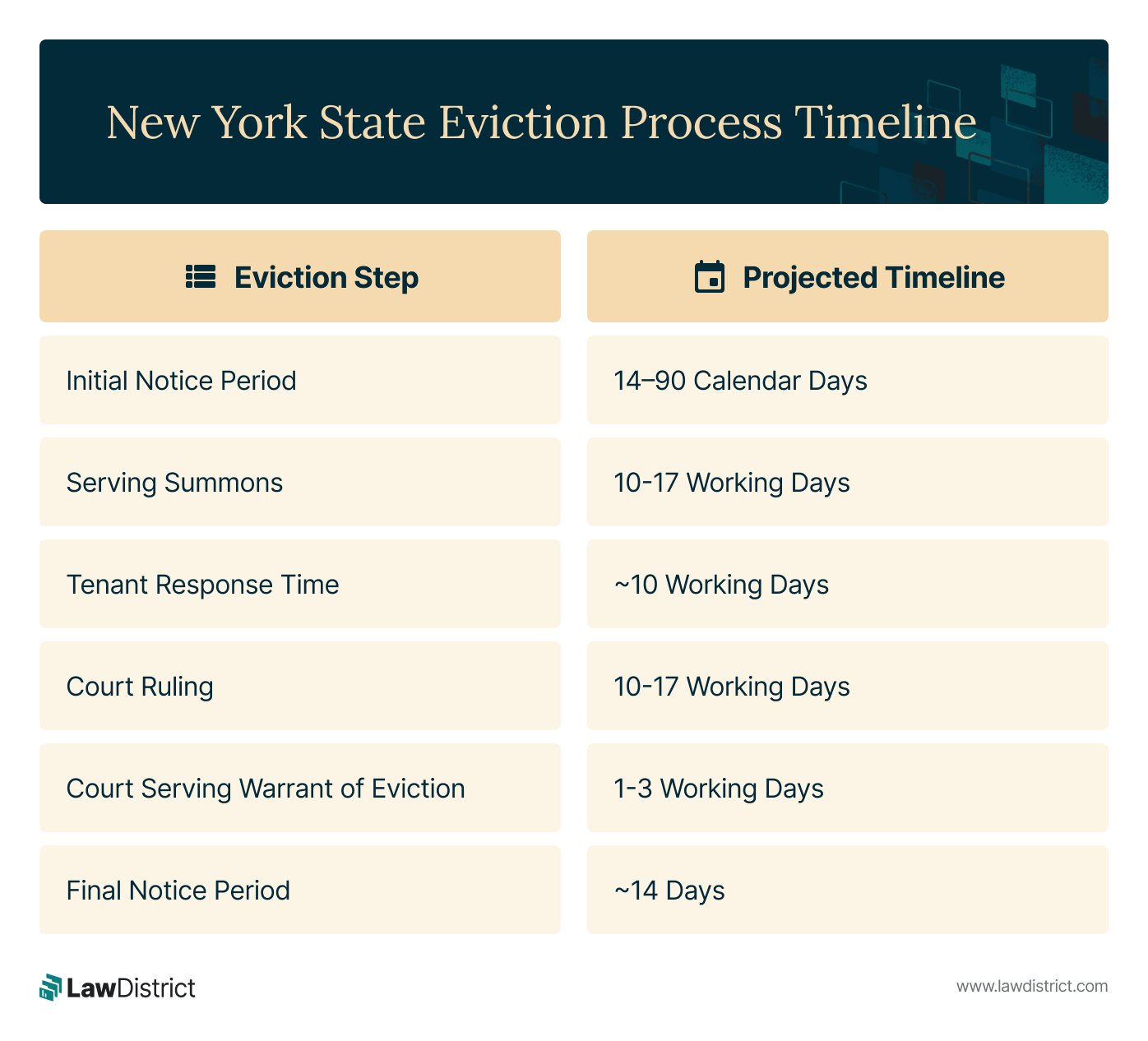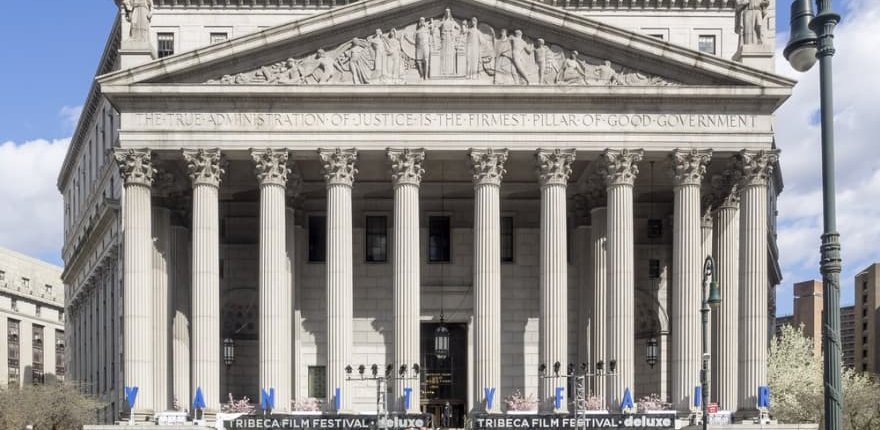Evicting a tenant in New York involves following strict rules and adhering to a specific timeline. Whether you're a seasoned landlord or a first-time property owner, understanding the eviction process in New York is crucial for a successful outcome.
From serving notices to appearing in court, each step has its requirements and deadlines. Failure to comply with landlord-tenant laws can result in delays, legal complications, and financial losses. Before the eviction, you must terminate the tenancy by giving the tenant a 30 days written notice. If they do not comply, you can file an eviction case.
This article will give details on legal reasons to evict a tenant, what you cannot do, the legal eviction process in New York, and provide an outline of the eviction process timeline.
Legal Reasons to Evict a Tenant
According to the New York statutes, Title 9 Chapter VIIB Part 2104, Landlords can evict tenants after following the rules and regulations in the provisions. They include the following:
-
Nonpayment of due rent: If a tenant fails to pay rent on time, you can initiate eviction proceedings. However, you must give proper notice and allow the tenant to pay the overdue rent.
-
Lease violations: If a tenant violates the lease terms, such as causing damage to the property, engaging in illegal activities, or breaching other lease provisions, you may have grounds for eviction.
-
Holdover tenancy: If a tenant's lease has expired, and they remain in the property without your permission, you can seek to evict the tenant for holdover tenancy.
-
Owner's intent to occupy: New York law allows you to evict a tenant if you intend to occupy the property or if you need the property for your immediate family's use.
Eviction Notices without a Cause
A property owner cannot end a valid tenancy without a cause in New York. If you do not have an eviction cause, you must wait until the lease ends before asking the tenant to move out.
However, suppose your tenant is on a month-to-month rental agreement. In that case, you can terminate the tenancy by providing a written notice at least 30 days before the termination date for tenants who've lived in the rental unit not more than one year, 60 days for those who've resided between 1–2 years, and 90 days for those who've rented for more than two years (NY Real Prop L § 226-C).
What Landlords Cannot Do in NY
New York strictly forbids wrongful eviction or "self-help" eviction. It is considered a serious violation of a tenant's rights regardless of the reason behind it. Examples of illegal eviction practices in New York include:
- Changing locks
- Shutting off utilities
- Removing a tenant's belongings
- Using force or threats to force a tenant to leave
These actions can result in severe legal consequences, including fines, penalties, and potential civil lawsuits filed by the tenant.
How to Start Eviction Process in New York
The following are the legal steps to take in the eviction process in New York.
Serve the tenant with a written notice
The notice you give depends on the situation that led to the eviction process. For instance, give a "3-Day Notice to Pay or Quit" for nonpayment of rent, a "10-Day Notice to Cure or Quit" for lease violations, or a "30-Day or 60-Day Notice to Terminate Tenancy" for no-cause termination of a month-to-month tenancy.
Serve the notice by delivering it directly to the tenant, leaving it with a suitable individual at the rental unit, posting it at a conspicuous palace in the property, or mailing it.
File an unlawful detainer lawsuit
If the tenant does not obey the given notice or fails to vacate the premises, file an unlawful detainer lawsuit in the court where the rental unit is located. For example, if the property is in Long Beach or Brookhaven, file the case in the District Court in that particular town. You must serve the notice for the petition 10–17 days before the scheduled hearing.
Case hearing and judgment issuance
The hearing date is often set when you file the petition for eviction. Moreover, you or the tenant can ask for a 14-day adjournment. If the tenant fails to show up, the court will continue with the case. If the court decides in your favor, a writ of possession will be issued. But if the tenant wins, you must stop all attempts to evict.
Issue tenant with a warrant of eviction
A warrant of eviction is the last notice you give to a tenant requesting them to leave within a certain period. The timeline to vacate can be a few hours to 14 days. If the tenant refuses to vacate, you may need to get a forcible entry and detainer order—supported by the New York repossession laws.
Get Your NY Eviction Notice Form Here
New York Tenant Eviction Process Timeline
The eviction timeline in New York can be affected by various factors, including the type of eviction, the court's schedule, and the tenant's response. These factors can cause the eviction to take 1-5 months. The following timeline can help you determine how long it may take in your situation.

FAQ's
-
It can take 1 to 5 months to complete an eviction process in New York. The length of time varies depending on factors such as the reason for eviction, the type of tenancy, the court's schedule, and the tenant's response.
-
A landlord generally cannot evict a tenant without a court order. The eviction process in New York is governed by specific laws that require a court order for a lawful eviction. However, some landlords use unlawful means to force tenants to vacate.



